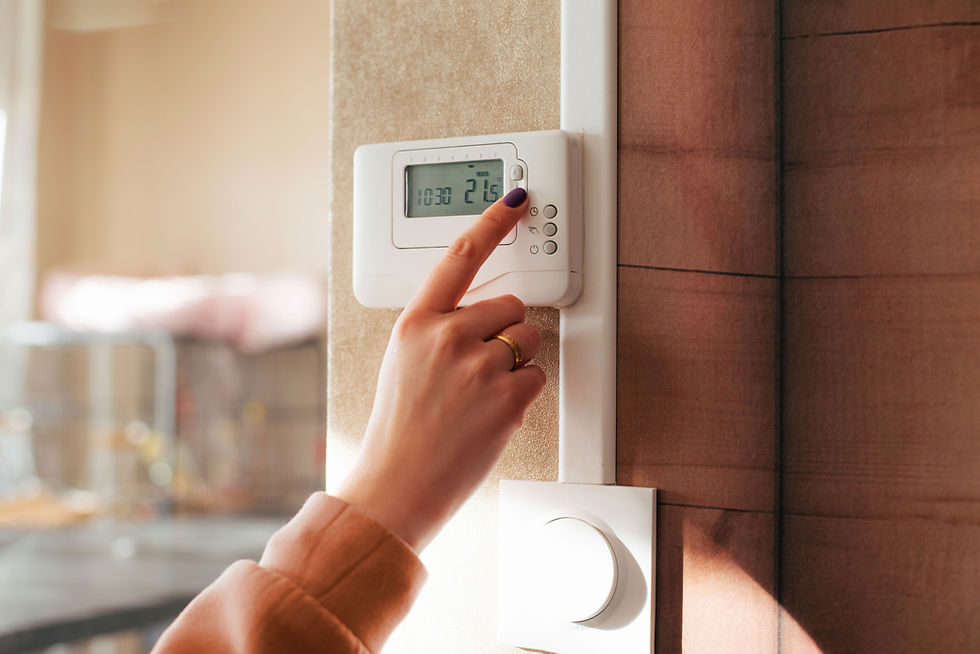Indoor Air Quality Myths Debunked: 8 Facts You Need to Know
- Clean Air HVAC Care
- Feb 19
- 3 min read
When it comes to indoor air quality (IAQ), misinformation can lead to unnecessary worries or complacency. Understanding the truth about common myths surrounding IAQ is crucial for maintaining a healthy home environment. In this article, we’ll debunk some of the most prevalent indoor air quality myths and provide you with accurate information to help you make informed decisions for your living space.

Myth 1: Indoor Air Is Always Cleaner Than Outdoor Air
The Truth: Many people believe that the air inside their homes is automatically cleaner than the air outside. In reality, indoor air can often be more polluted than outdoor air, especially in tightly sealed homes with limited ventilation.
Why It Matters: Indoor pollutants from household products, dust, pet dander, mold, and VOCs can accumulate, leading to poor air quality. Regular ventilation and air purification are essential to maintaining a healthy indoor environment.
Myth 2: Only Smokers and Pet Owners Need to Worry About IAQ
The Truth: While smokers and pet owners certainly contribute to indoor air pollution, everyone should be concerned about IAQ. Common sources of indoor air pollutants include:
Household cleaners and chemicals
Paints and solvents
Dust and mold
Why It Matters: Poor indoor air quality can affect anyone, leading to respiratory issues, allergies, and other health problems, regardless of lifestyle. Awareness and action are vital for everyone.
Myth 3: Air Purifiers Are a One-Stop Solution
The Truth: While air purifiers can significantly improve indoor air quality by removing certain pollutants, they are not a cure-all. They should be part of a broader strategy to enhance IAQ.
Why It Matters: Relying solely on air purifiers without addressing other factors—like regular cleaning, proper ventilation, and eliminating sources of pollution—can limit their effectiveness. A comprehensive approach is necessary for optimal results.
Myth 4: Opening Windows Is Enough to Improve IAQ
The Truth: Although opening windows can help ventilate a space, it may not always lead to better air quality. Outdoor air can contain pollutants, pollen, and allergens that can enter your home.
Why It Matters: In urban areas or during high pollen seasons, outdoor air may be more polluted than indoor air. Using exhaust fans and air exchange systems can help balance fresh air intake and maintain indoor air quality without bringing in unwanted contaminants.

Myth 5: You Can’t Do Anything About Indoor Air Pollution
The Truth: Many sources of indoor air pollution can be managed or eliminated with conscious choices and regular maintenance. Simple actions can make a significant difference.
Why It Matters: By using low-VOC products, practicing regular cleaning, ensuring proper ventilation, using the best grade filter your HVAC system can handle and choosing houseplants known for air purification, you can actively improve your indoor air quality.
Myth 6: Allergies Are the Only Health Concern Related to IAQ
The Truth: While allergies are a common result of poor indoor air quality, the health implications extend far beyond that. Long-term exposure to indoor pollutants can lead to serious health issues, including:
Respiratory diseases
Headaches and fatigue
Heart disease
Why It Matters: Understanding the broader health risks associated with indoor air pollution can motivate proactive measures to enhance IAQ, benefiting everyone in your home.
Myth 7: Humidity Doesn’t Affect Indoor Air Quality
The Truth: Humidity levels play a critical role in indoor air quality. High humidity can promote mold growth and dust mites, while low humidity can lead to dry air that irritates the respiratory system.
Why It Matters: Maintaining indoor humidity levels between 30% and 50% is crucial for optimal air quality. Using dehumidifiers or humidifiers, depending on your environment, can help achieve this balance.
Myth 8: New Homes Have Better Air Quality
The Truth: New homes can have poor indoor air quality due to off-gassing from new materials, such as paints, carpets, and furniture.
Why It Matters: Just because a home is new doesn’t mean it’s automatically free from pollutants. It’s important to ventilate new spaces well and choose low-emission products to maintain healthy air quality.

Conclusion
Understanding the truth behind indoor air quality myths is essential for creating a healthy living environment. By recognizing that indoor air can be more polluted than outdoor air, that everyone should be concerned about IAQ, and that proactive measures can significantly improve air quality, you empower yourself to take action. Whether it’s investing in air purifiers, practicing regular cleaning, or managing humidity levels, every step you take can lead to a healthier home.
_edited_edited.png)


